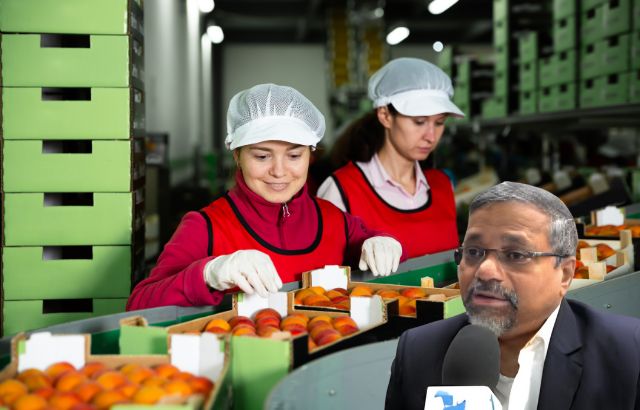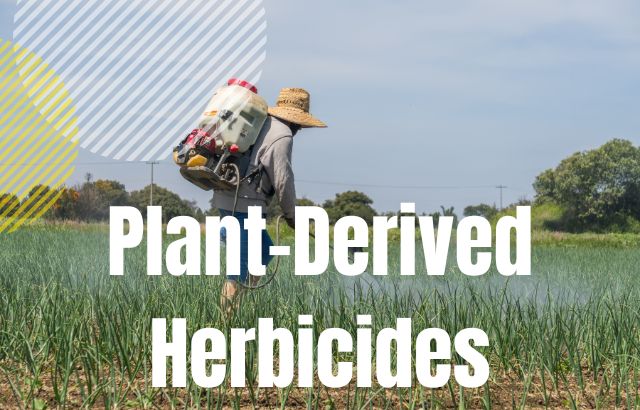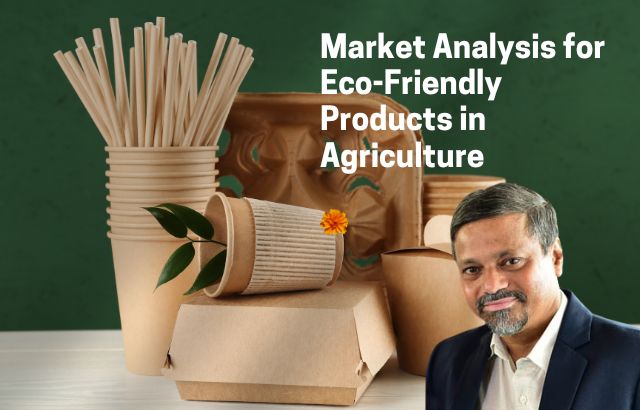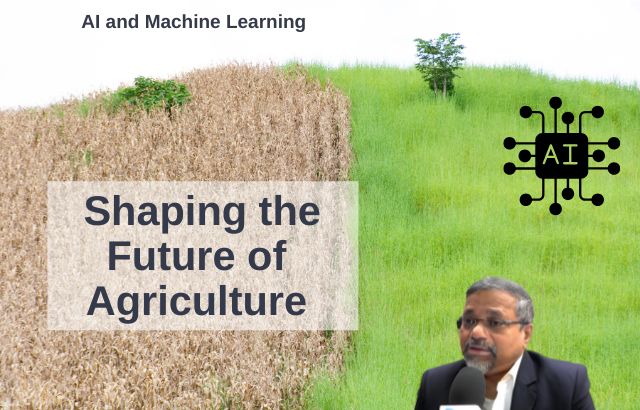In recent years, the agriculture sector has undergone a profound transformation, with an increasing shift toward sustainability. This movement is driven by the need to reduce environmental impacts, preserve biodiversity, and ensure the long-term viability of farming practices. As a result, the demand for eco-friendly products—particularly in the form of sustainable farming solutions like green herbicides, bio-based fertilizers, and organic farming products—has seen significant growth. In this market analysis, we will explore key trends in sustainable farming practices, the growth projections for green herbicides, and the increasing consumer demand for organic farming products.
1. Trends in Sustainable Farming Practices

Sustainable farming practices are centered around the principle of producing food in ways that minimize environmental impact while maintaining or improving farm productivity. These practices are increasingly becoming the standard as farmers and consumers alike recognize the long-term benefits of eco-friendly approaches. Several key trends are shaping the growth of sustainable farming:
a. Reduced Chemical Use
Traditional chemical pesticides, herbicides, and synthetic fertilizers are being replaced by more sustainable alternatives. These alternatives, including green herbicides, bio-pesticides, and organic fertilizers, offer farmers a way to reduce reliance on harmful chemicals, which can contaminate water supplies, harm beneficial insects, and degrade soil quality.
b. Adoption of Integrated Pest Management (IPM)
IPM is a holistic approach that combines biological control, crop rotation, and resistant plant varieties to manage pests and weeds in a sustainable way. Farmers are increasingly adopting IPM as part of their strategy to reduce the use of chemical pesticides and herbicides, while still protecting their crops.
c. Precision Agriculture
Advancements in technology, such as drones, sensors, and AI, are helping farmers implement more efficient and sustainable farming practices. Precision agriculture enables farmers to apply resources like water, fertilizer, and pesticides more efficiently, reducing waste and minimizing environmental impacts.
d. Soil Health and Regenerative Practices
Soil health is a crucial aspect of sustainable farming. Regenerative agricultural practices, such as no-till farming, cover cropping, and composting, are gaining popularity as they restore and enhance soil biodiversity, reduce carbon emissions, and increase crop resilience.
2. Growth Projections for Green Herbicides

Green herbicides, derived from natural sources like plants, microorganisms, or minerals, are a key segment of the eco-friendly product market in agriculture. These herbicides offer a safer and more sustainable alternative to synthetic chemical herbicides, which have been linked to soil degradation, water contamination, and health risks for farm workers.
a. Market Growth
The market for green herbicides is projected to grow significantly in the coming years. According to industry reports, the global market for bio-based herbicides is expected to experience a compound annual growth rate (CAGR) of around 7.4% from 2022 to 2030. This growth can be attributed to the increasing adoption of sustainable farming practices, rising environmental concerns, and stringent government regulations on pesticide use.
b. Key Drivers of Growth
- Environmental Regulations: Governments worldwide are tightening regulations on the use of chemical herbicides, driving the demand for eco-friendly alternatives like green herbicides.
- Health and Safety Concerns: Farmers and consumers are becoming more aware of the potential health risks associated with conventional herbicides. This awareness is fueling the demand for safer, plant-based alternatives.
- Effectiveness and Cost Efficiency: Green herbicides, while generally more expensive than synthetic herbicides, are gaining popularity due to their effectiveness and lower environmental footprint. As research and development progress, the cost of production is expected to decrease, further driving adoption.
c. Popular Types of Green Herbicides
- Plant-Based Herbicides: These herbicides are derived from plants like clove, garlic, and citrus. They are known for their ability to target specific weeds without harming surrounding crops or soil health.
- Microbial Herbicides: These herbicides are based on naturally occurring microorganisms, such as bacteria or fungi, which act as natural weed killers.
- Organic Acids: Vinegar and other organic acids are used as natural herbicides. These substances are biodegradable and have a low environmental impact.
3. Consumer Demand for Organic Farming Products

The consumer demand for organic products has been steadily increasing over the past decade, with many consumers prioritizing sustainability, health, and food safety when making purchasing decisions. This trend is particularly evident in the demand for organic farming products, including fruits, vegetables, and grains, which are grown without synthetic pesticides or fertilizers.
a. Growing Consumer Awareness
The rise in consumer awareness about the environmental and health impacts of conventional farming practices has led to a surge in demand for organic and eco-friendly farming products. As consumers become more informed about the benefits of organic food—such as fewer pesticide residues, improved nutritional content, and reduced environmental impact—they are increasingly choosing organic options in grocery stores and farmers’ markets.
b. Shift Towards Sustainable Food Choices
Millennials and Gen Z consumers, in particular, are driving the demand for sustainable food. These generations are highly concerned about environmental issues, such as climate change and resource depletion, and are actively seeking out products that align with their values. Organic food production is seen as a key component of a more sustainable food system, and these generations are more likely to support organic farmers and eco-friendly agriculture.
c. Market Growth and Projections
The global organic food market is projected to continue growing at a robust rate, with a forecasted CAGR of around 10.5% from 2023 to 2030. This growth is being fueled by increasing demand for organic products, improved availability of organic foods, and expanding consumer access to organic farming products through online marketplaces.
4. Challenges and Opportunities in the Eco-Friendly Agriculture Market

a. Challenges
- Higher Production Costs: Eco-friendly farming practices and green herbicides tend to have higher upfront costs compared to conventional methods. This can pose a barrier for small-scale farmers or those in developing regions.
- Education and Adoption: The shift to sustainable practices often requires farmers to adopt new technologies, change their approaches, and invest in training. Overcoming the knowledge gap and resistance to change is a key challenge.
- Supply Chain Issues: The demand for organic and eco-friendly products is growing, but supply chain limitations—such as availability of raw materials for green herbicides and organic fertilizers—can slow the growth of the market.
b. Opportunities
- Innovation and R&D: Ongoing research and development into new green products—ranging from bio-based pesticides to plant-derived fertilizers—presents significant opportunities for innovation in the agriculture sector.
- Government Support: Many governments are offering subsidies, grants, and incentives for farmers who adopt sustainable practices. This support helps reduce the financial burden of transitioning to more eco-friendly farming practices.
- Consumer Engagement: Engaging consumers through educational campaigns about the benefits of organic and sustainably grown products can help expand the market. With increased demand for sustainable products, producers and retailers have the opportunity to cater to the growing eco-conscious consumer base.
Conclusion
The market for eco-friendly products in agriculture is growing rapidly, driven by the increasing demand for sustainable farming practices, green herbicides, and organic farming products. As environmental concerns, regulatory pressures, and consumer preferences for health-conscious food choices continue to rise, farmers and businesses have the opportunity to invest in innovative solutions that promote sustainability. By addressing the gaps between traditional agricultural practices and more eco-friendly approaches, the agriculture sector can foster a more sustainable future for all stakeholders involved.










